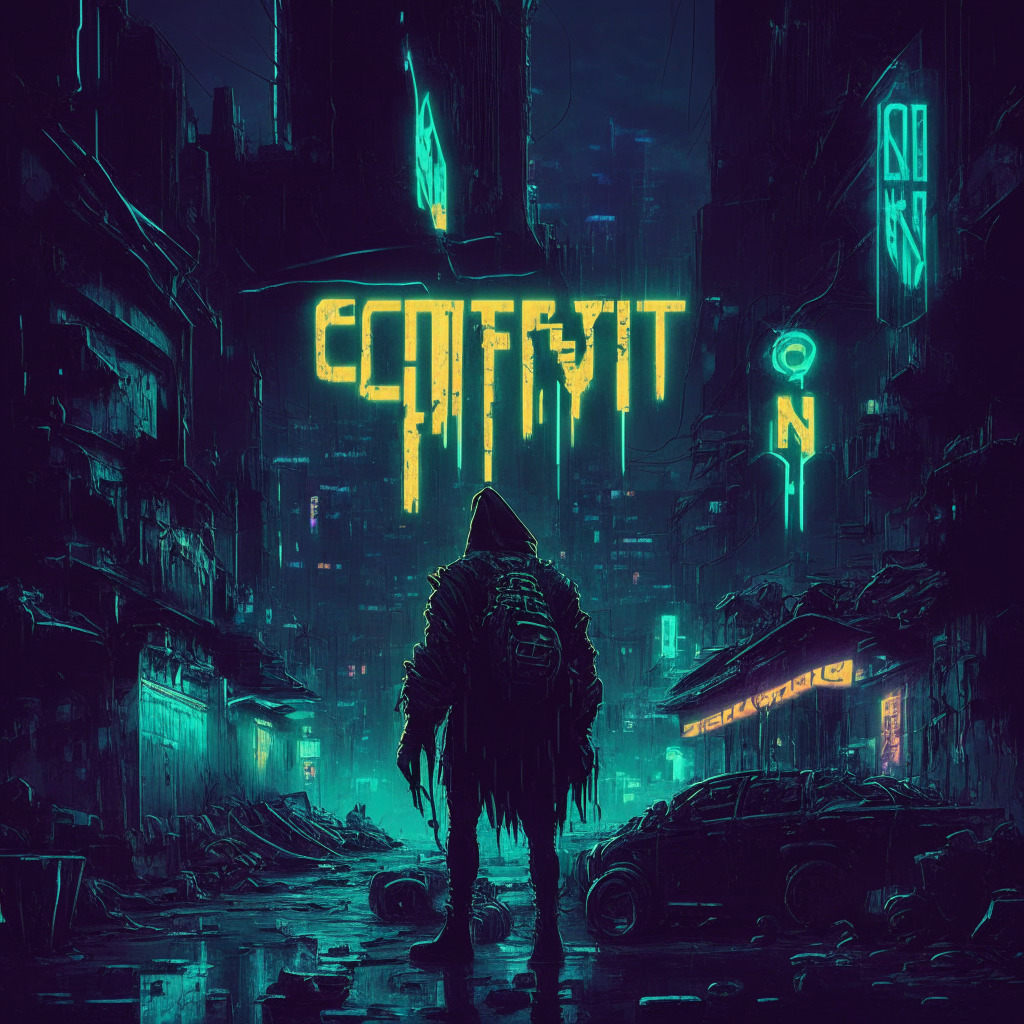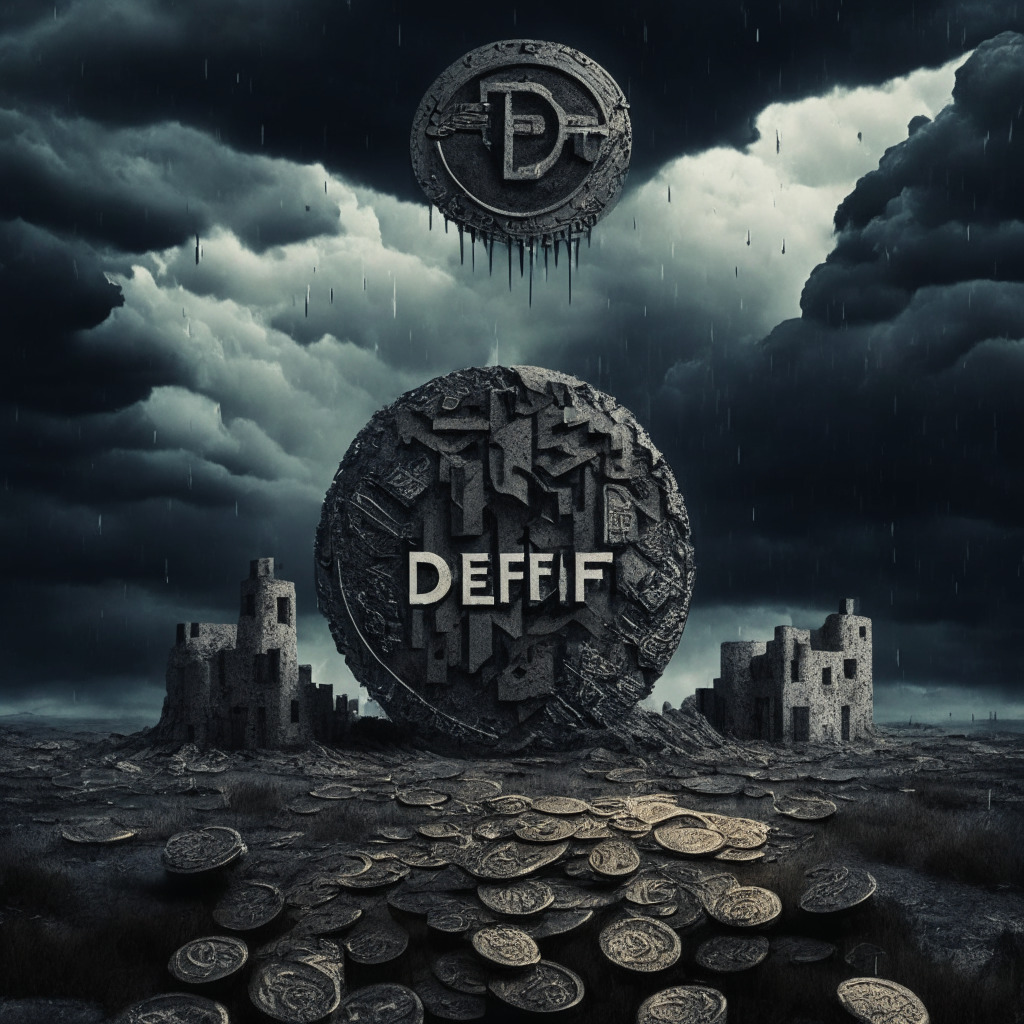Michael Egorov, founder of DeFi protocol Curve, employed a strategy to settle his extensive obligations on Aave. He deposited millions of CRV as collateral on a lending platform, and borrowed Curve’s crvUSD stablecoin, which he exchanged for USDT to clear his Aave debt. Despite significant outstanding debt across several DeFi platforms, Egorov has been proactive in lessening his debt and usage rate.
Search Results for: Curve
Navigating Stormy Waters: How Curve Finance Founder’s Debt Reduction Casts Light on DeFi’s Potential Pitfalls and Promises
“Michael Egorov, founder of Curve Finance, reduced his debt to $42.7M through repayment on Aave’s DeFi platform and other key protocols. Despite the near $100M debt risk and a $47M loss from a security vulnerability that caused a CRV token price crash, Egorov continued to decrease his debt, offering a cautionary tale on DeFi debt and blockchain security risks.”
Exploits, Ethics and the Attack on Curve: Examining the Undeniable Impact of Crypto Heists
In July, a $73 million exploit on Curve, a key decentralized finance player, impacted the wider DeFi platform’s asset-pricing system. A trading bot manipulated the vulnerability, inadvertently benefitting Coinbase, the Ethereum validator involved. Most of the stolen money was recovered yet left questions about asset recovery procedure after crypto heists.
Dismissal of Lawsuit Against Curve Finance’s CEO: An Unfolding Legal Drama in Decentralized Finance
A lawsuit against Curve Finance’s CEO, Michael Egorov, alleging fraud and misappropriation of trade secrets was dismissed by a California judge due to procedural technicality. Egorov’s lawyers argued the case belongs in Switzerland, where both Egorov and his company, Swiss Stake resides.
CurveDAO’s Crash and Sonik Coin’s Rise: Navigating the Volatile Crypto Markets
“CurveDAO faced a $61m theft, causing a 20% price nosedive. Despite indications of recovery, CRV prices remain low. Contrarily, Sonik Coin, offering a 209% APY, has raised $350,000 before presale, aiming for a $100 million market cap.”
Coinbase’s Curveball: Acquiring Stake in Circle and Impact on USDC, Coupled With Emerging Legal Battles and Friend.tech’s Surprising Growth
Cryptocurrency exchange Coinbase acquired a minority stake in Circle Internet Financial, causing the dissolution of their Centre Consortium venture, responsible for issuing USD Coin (USDC). Despite this, Circle plans to continue in-house issuance and governance of USDC, which is expanding its support network to include six additional blockchains. Notably, no cash was involved in the transaction between Coinbase and Circle.
DeFi Drama: Curve Finance Exploit, Zunami Protocol Losses and the Rise of Ethereum’s Linea
“In response to a $62 million hack, Curve Finance is assessing each impacted user for potential reimbursement. In contrast, the DeFi protocol Zunami Protocol suffered a $2.1 million loss via an attack on its ‘zStables’ pools. On a positive note, ConsenSys launched its Ethereum scaling rollup Linea, bridging over $26 million in ETH.”
Navigating the Aftermath: Dealing with the $12M Curve Exploit Loss in Crypto Lending
JPEG’d, an NFT-collateralized lending app, recently lost nearly $12 million in a Curve exploit. The swift recovery action led to the return of 90% of funds, but left a significant unresolved loss. The event highlights the vulnerabilities and risk management requirements in the dynamic crypto realm.
Binance Labs’ $5M Investment in Curve: A Hopeful Future Amidst Past Challenges
“Binance Labs has invested $5 million in Curve DAO Token (CRV) of the decentralized finance (DeFi) sector. While solidifying its lead as a stablecoin automated market maker, Curve had challenges, including a $70 million hack injuring its token price.”
Binance Labs’ $5M Pledge to Curve DAO: A Growth Bet or Security Paradox?
“Binance Labs invests $5 million into Curve DAO Token (CRV), the operating token for Curve decentralized exchange. Despite recent hacking losses, Binance co-founder, Yi He, sees this partnership as crucial for the future growth of the DeFi ecosystem.”
The Curve conundrum: A DeFi Chronicle – Debunking Untouched Vulnerabilities and the Road Ahead
Last month, renowned decentralized exchange, Curve, suffered a hack that led to a loss exceeding $70 million, sending its native token, CRV, into a sharp downward spiral. While ongoing risky lending practices compounded the concern, Curve made a remarkable recovery, recovering almost 75% of the lost assets. This incident underscores the vulnerabilities within DeFi platforms and the importance of preparedness for unexpected events in the decentralized finance space.
Bounty Hunting in Crypto Space: Examining the $1.85M Offer from Curve Finance
“Decentralized finance platform, Curve Finance is offering a $1.85 million bounty for identifying the culprit who drained $61 million from its stable pools. These incidents expose the vulnerabilities within DeFi projects, undermining the perception of security and trust, and emphasize the need for a balance between innovation and security.”
Blockchains Balancing Act: Security Vulnerabilities and Technological Progression in Light of Curve Finance Hack
A hacker who drained several pools on Curve Finance returned approximately 5,495 Ether (ETH), worth around $10 million. This surprising development happened after an agreement wherein the hacker received a bounty. This raises questions around blockchain security, revealing its vulnerabilities but also demonstrating its resilience in what JPEG’d’s team refers to as a “white-hat rescue.”
DeFi Security Scare: The $61 Million Curve Finance Breach Study
A recent exploit targeting the Curve Finance pools via the Vyper programming language led to a $61 million theft, exposing DeFi vulnerabilities. This event has sparked discussions about security in the blockchain era and emphasized the need for continuous investment in safety protocols. Despite losses, it also presents an opportunity for DeFi platforms to refine and rebuild.
Curve Finance’s CRV Stolen Funds: A Tale of Recoveries, Risks and Potential Returns
The recent 7% rally of Curve Finance’s native token, CRV, is linked to the return of stolen funds by a hacker who had drained more than $50 million from multiple DeFi protocols. Although anticipation for full funds return has risen, the heist has highlighted vulnerabilities in decentralized investor fund security, shaking confidence, and posing a potential obstacle for CRV’s future growth.
The Impact of Curve Finance’s $52M Hack on CRV’s Market Performance and Future Prospects
“Following a cyberattack that exploited a flaw in the Vyper programming language, Curve Finance’s native token, CRV, experienced a 3% increase but remains 18.5% lower than its pre-hack value. Curve Finance saw a sharp drop in confidence, offering the hackers a 10% bounty for stolen funds returned by August 6, with potential market-reaching consequences.”
Navigating the Crisis: Curve Finance Founder’s Struggle with $80 Million On-Chain Debts
Michael Egorov, the founder of Curve Finance, faces a potential crisis due to approximately $80 million on-chain debts to several lending platforms. Despite selling 72 million CRV tokens to mobilize funds, the risk remains high, especially if the CRV price drops dramatically.
Crypto Solidarity: Understanding Justin Sun’s Rescue of Curve Finance from Looming Crisis
In an effort to save the decentralized exchange protocol, Curve Finance, from a potential bad debt crisis, crypto investor Justin Sun purchased approximately 5 million Curve tokens. Sun’s actions helped preserve the value of CRV tokens and demonstrated the potential of collective action in protecting investments amid the volatile nature of the cryptocurrency market.
Navigating the Labyrinth of Crypto Security: Curve Finance Exploit and the Quest for Resilience
“Recent headlines reveal the risks in daily crypto transactions, as seen in the Curve Finance and Multichain protocol exploits. The security breaches exposed the need for reform and evolution in blockchain safety measures. Consequently, systems like the Global Systematically Important Protocol (G-SIP) could improve cybersecurity and resilience, signifying promise and caution in the cryptosphere.”
Binance Bolsters Crypto Market: A Bold Rescue of Curve’s CRV Amid Collapse Fears
After an exploit saw Curve’s native token CRV plummet, market makers at Binance upped their buy orders within 2% of the mid-price from 500,000 to over 1 million CRV. This unusual response to a falling currency is seen by many as a strong supporting move that may have prevented widespread fallout in the decentralized finance market. Despite this, CRV fell by over 14%, sparking alarm across the sector.
Curve Finance Hack and the Tentative Balance in DeFi’s Future
“The DeFi segment suffered a setback when Curve Finance, an Ethereum-based decentralized exchange, was hacked, leading to a 20% price drop in its token (CRV). Founder Micheal Egorov’s substantial loans backed by CRV triggered a panic-induced price drop. However, Egorov’s partial loan repayments and an intriguing pattern in the derivatives market suggest a potential near-term rally for CRV.”
Unraveling DeFi Instability: Curve Founder’s Actions as Catalyst for Market Risks
Michael Egorov, founder of Curve Finance, destabilized on-chain lending markets by leveraging his CRV holdings for large token loans, potentially triggering a wide-scale liquidation and distressing debts within the DeFi ecosystem. The situation underscores the importance of robust response strategies in the decentralized finance world.
Ethereum Rebounds After Curve Hack: A Tale of Market Resilience and Vulnerability Exploration
“In response to a security breach on Curve resulting in theft of about 2,800 ETH, Ethereum’s value dipped 2%. A savvy bot returned the stolen funds, cushioning the blow for ETH. Amid market-wide negativity, Ethereum’s recovery seems promising due to its fundamentals and continuous development, especially with institutions like Deutsche Bank initiating Ethereum trials.”
Navigating Debt Crisis: How Curve Creator’s New Liquidity Pool Could Stabilize CRV Tokens
Michael Egorov, creator of Curve, has introduced a new liquidity pool, crvUSD/fFRAX, on his decentralized exchange to mitigate potential debt crisis and repay a curve token (CRV)-backed loan. The pool, bolstered with 100,000 CRV rewards, is aimed at decreasing the utilization rate to prevent unsustainable interest charges, attracting more liquidity into the system and providing respite from daunting debt levels.
Ethereum Validators’ Jackpot: MEV Surge Amidst Curve Finance Exploit
“MEV rewards for Ethereum validators surge after an exploit on Curve Finance triggers a torrent of transactions on the blockchain. The increased transaction rate, due to concerns about crypto asset safety, leads to higher transaction fees and a subsequent rise in MEV, a form of gain from rearranging or adding transactions in a data block.”
The Curious Case of Curve Finance’s $5.4M Recovery: Triumph Amid Disaster or a Stumbling Block?
An ethical hacker, known as “c0ffeebabe.eth”, has recovered roughly $5.4 million for DeFi protocol Curve Finance following a devastating hack. Despite this, concerns around fraudulent schemes and market instability have risen post-recovery, raising questions about Curve Finance’s future.
Unlocking the Mystery: Curve Finance’s Crisis and Crypto Market Responses
“A discrepancy in Curve Finance’s CRV token stablecoin pools sparked volatility, leading to a loss of over $100 million. The issue arises from a vulnerability in Vyper programming language, which is used by Curve. Reactions varied among crypto exchanges, raising questions about risk management strategies in crypto markets.”
Decentralized Exchanges: Perils and Promises Unleashed by Curve Finance Exploit
“After a significant exploit at decentralized exchange Curve Finance, concerns among traders increased. Despite this, the perpetual futures markets remained steady. The incident led to a shift in trading focus onto Uniswap’s UNI token, suggesting traders are evaluating decentralized exchanges more meticulously, considering all facets before committing.”
Crypto Innovation vs Security: Unpacking the Curve Heist and Its Implications for DeFi
The cryptocurrency world faces another heist, jeopardizing more than $100 million worth of cryptocurrency from the DeFi ecosystem on Ethereum, Curve, due to an exploitative “re-entrancy” bug in Vyper. Future projects grappling with Vyper could encounter similar vulnerabilities. The incident arouses essential security considerations amidst the pursuit of progress in the crypto world.
Curve Finance Exploitation: Stark Reminder of Crypto Security Challenges and Risks
In a recent incident, Curve Finance faced a significant blow with losses totaling $24 million due to reentrancy vulnerability. This highlights a critical paradox in blockchain security- while the structural integrity is unassailable, errors within constructs can lead to exploitation. While developing rapidly, crypto’s safety measures continually need updating. The incident serves as a reminder that even the most robust systems can face setbacks if not meticulously maintained.
Bank of Japan’s Yield Curve Control Adjustment: How Might it Affect Bitcoin and Other Cryptocurrencies?
“The Bank of Japan (BOJ) has raised the hard cap on 10-year Japanese government bond yield from 0.5% to 1%, a move seen as hawkish by market analysts. Given Bitcoin and other cryptos are considered risk assets, such monetary policy changes could impact the crypto sphere. The BOJ’s approach may signal turbulent times for these assets as world shifts toward future interest rates hikes.”
Harnessing the Duck Curve: The Rise of Bitcoin Mining in Texas and its Implications
“In their strategy to attract Bitcoin miners, Texas utilizes a unique “duck curve” model illustrating energy supply and demand fluctuations. Texas’s adaptive system allows the price of energy to “float” throughout the day, creating a favourable environment for Bitcoin miners with an abundance of cheap renewable energy. However, regulatory and environmental concerns pose a challenge.”































